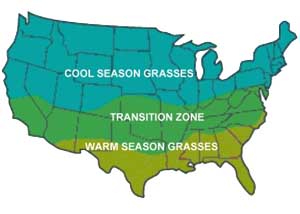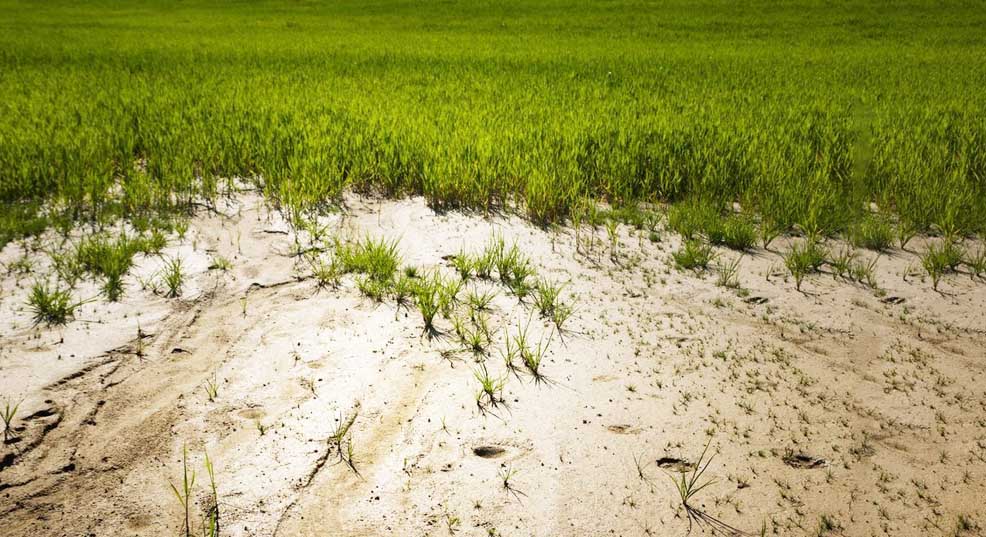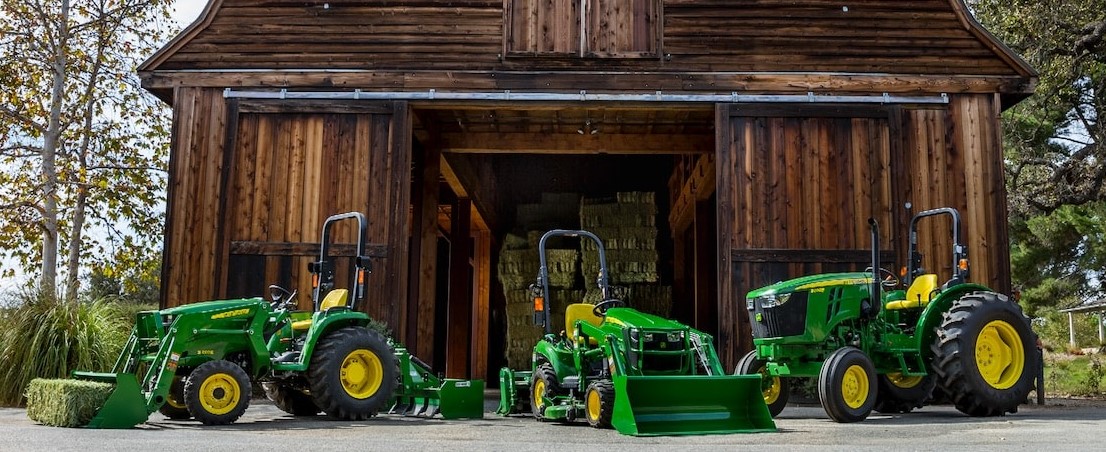Choosing the Best Grass for Sandy Soil
When you live on sandy soil, having a large, beautiful garden might seem achievable at first. True, not all grasses grow well on sandy soil because it contains irregular particles with air pockets. It doesn’t allow your grass to retain water and valuable minerals that it needs to grow.
However, that doesn’t mean that all grass is like this – there are plenty of various types fit for all climates and types of turf.
So today, we’ll take a look at some of the best grass for sandy soil that you can easily add to your garden.
Sandy Soil Overview
Sandy soil is often referred to as light soil due to its texture. Such turf doesn’t have many minerals and is usually dry since it drains water rather quickly. So, as you can imagine, this is a rather challenging place for plants to thrive in.
Sandy soil is most common in arid and semi-arid regions, however, coastal areas tend to have such soil as well.
Will Grass Grow in Sand?
It will, BUT it all depends on what kind of grass grows in the sand? There are 3 types of grass: the one that thrives in colder regions, warmer, or the one that’s in the transition zone.
So to determine the best grass for sandy soil, you need to understand which types of seasonal grass would be a better choice.
Cool-season Grasses Vs. Warm-season Grasses for Sandy Soil

When it comes to grass for sandy soil, these are the two major categories: cold and warm regions.
Cool-season grasses actively grow in spring and fall but remain dormant in winter and summer, e.g., bentgrass. On the other hand, warm-season grasses vigorously grow during the summer season but become dormant during winter, e.g., Bahia and Bermuda grass.
Grass Types That Grow in Sand
The best grass for sandy soil is the one that thrives in dry and sandy areas – and that is ornamental grass.
In addition to being suitable for sandy conditions, this type of grass is amazing since it doesn’t require cutting or mowing. Thus, these will be a perfect choice if you are looking for grass for sandy soil.And while creating our grass for sandy soil reviews, we’ve found the five best grass seeds for sandy soil, that we’re certain will make your garden look a lot more beautiful and impressive.
Tall Fescue
Tall Fescue is a cool-season grass for sandy soil native to Europe. This amazing plant is known and valued for its ability to adapt to various climate changes: whether its heat, drought, shade, and cold.
Tall Fescue is suitable for northern lawns and transition zones. It easily establishes from its seed and germinates rapidly. Moreover, its root system extends deep, making it a drought and heat-resistant grass compared to other cool-season grasses.
| Grass type | Cool-season grass (perennial) |
| Soil type | Well-drained soil |
| Soil pH | 5.5 – 7.0 (Acidic) |
| Sunlight requirement | Four hours of direct sunlight |
| Season | Fall – Spring |
| Strength | Drought, heat, and shade-tolerant |
Bent Grass
Bentgrass is a perennial cool-season grass that is mostly used in golf courses. With vigorous shallow roots that form a dense mat with its long narrow leaves, Bentgrass is considered one of the best grass for sandy soil. Moreover, bentgrass thrives well in cold and humid areas such as the northeastern part of the United States. However, on the downside, bentgrass does not blend well with other grasses.
| Grass Type | Cool-season grass (perennial) |
| Soil type | Well-drained soil |
| Soil pH | 5.0 – 6.5 (Acidic) |
| Sunlight requirement | Full exposure to sunlight |
Zoysia Grass
Another one of the best grass for sandy soil is Zoysia grass. This warm-season grass native to Asia spreads by stolon and rhizomes. And given that there are about eleven different species of Zoysia, you can easily choose the one that looks the best for you!
Of course, we couldn’t forget to mention that Zoysia is well known for being very tolerant of shade, drought, and traffic.
Zoysia develops a deep root system that makes it conserve moisture hence resists drought. Unlike Bermuda, it recuperates slowly; however, it creates a solid grass carpet on your lawn.
| Grass type | Warm-season grass (perennial) |
| Soil type | Good drainage soil |
| Soil pH | 6.0 – 6.5 (slightly acidic) |
| Sunlight requirement | Full exposure to sunlight |
| Strength | Shade, drought, cold, and traffic tolerance |
Bermuda Grass
In grass for sandy soil, Bermuda grass is one of the best grass for South Carolina. It is a perennial warm-season grass that is most active between late spring throughout the hot summer season. Bermuda is valued for its high thatch tendency, excellent tolerance to wear from drought and heat, and faster recuperative ability.
Moreover, Bermuda grass grows well in areas that experience full direct sunlight with good drainage soil; however, they also do well in other soil types such as clay soil. Its roots can go up to six feet in depth, thus providing more resistance against environmeёntal stress.
| Grass type | Warm-season grass (perennial) |
| Soil type | Sandy soil, clay, loam |
| Soil pH | 5.8 – 7.0 (acidic) |
| Sunlight requirement | Full direct sunlight |
| Season | Spring – Summer |
| Tolerance | Heat, drought, and acidity |
Bahia Grass
Bahia is one of the best grass seed for sandy soil in Florida. It has coarse leaves and flourishes well in hot areas with sandy soil. Just like other sand soil grasses, it is valued for its excellent heat and drought tolerance.
Bahiagrass grows slowly but establishes well. It is suitable for large and less maintained lawns with little irrigation.
| Grass type | Warm-season grass (perennial) |
| Soil type | Light and well-drained soil |
| Soil pH | 5.5 – 6.5 (slightly acidic) |
| Sunlight requirement | Full exposure to sunlight |
| Season | Spring – Summer |
How to Grow Grass in Sand?
If you want to grow grass in the sand and create a beautiful lawn out of it, one of the most important things to do first is to make preparations.
First things first, you need to take into account that sandy soil does not retain water and minerals for grass germination that good. This makes things a little more challenging.
So, here is how to go about it:
- Clear the area. Remove all dirt, including broken sticks, pebbles, and debris.
- Till the upper part of the soil, about 4 inches, and then add compost. This helps in water retention and increases nutrients.
- Add a good lawn fertilizer (high phosphorus fertilizer recommended).
- Mix the three (sand, fertilizer, and compost) correctly.
- Spread the grass seeds on the lawn as directed on the label, then using a rake cover with local soil.
- Water your lawn adequately to obtain proper germination.
Conclusion
When you’re choosing the best grass for sandy soils, you need to keep in mind that sand drains water quickly. Thus, your lawn will look beautiful if you go with more drought-resistant plants, such as Bermuda grass.
However, the ultimate choice about which is the best grass for sandy soil is entirely up to you! All the oriental grass makes a great choice for your garden – so consider what each of these plants offer, and go with the one that works for you!
With that said we sincerely hope that our best grass for sandy soil 2023 review helped you learn more about which grasses would be perfect for this environment. So best of luck choosing the grass that will make your lawn look gorgeous, and feel free to share some of your recommendations regarding which grass you think is the best for sandy soil and why!


